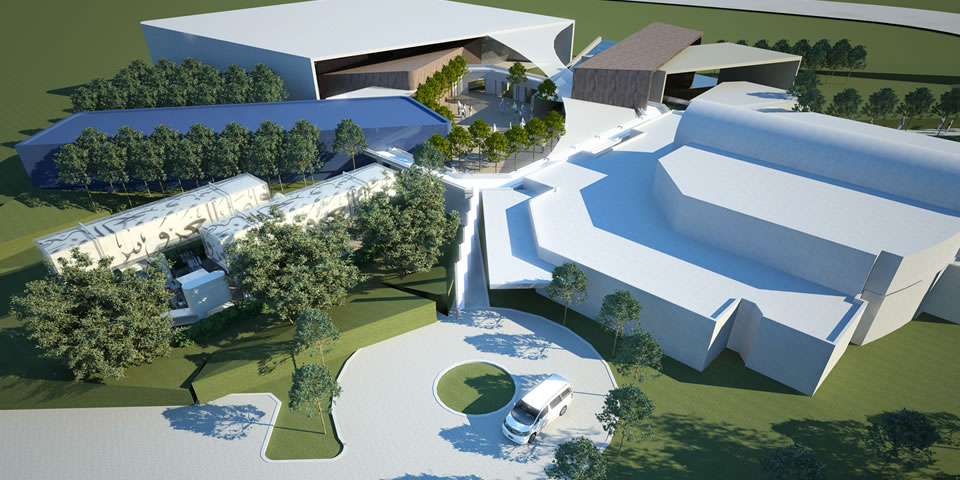Canberra Islamic Centre (CIC) is located in the Australian Capital Territory. Its presence is strategic in raising the profile of Muslims in the community and providing catalysts for social interactions, not only in Canberra but Australia-wide. Such a role is a form of symbolic capital that all peoples in Australia would greatly benefit from.
Our proposal is to create a Centre that more resembled a “community fair”, rich with activities, colours, avenues and greenery. But more importantly architectural forms that hinted of their community function, forms that were familiar in the civic or community context in Australia. Our aim was to create an active community hub in which all people are able to engage and experience. Therefore, in addition to a mosque, we proposed a multi function sports and conference hall, indoor swimming pool, Sunday community markets and the existing National Islamic Library.
One of our intentions was to ensure the site was very permeable through welcoming entry points and architectural forms that celebrated activity. The existing building form lacks what it takes to convey the magnanimous intentions of the Centre. In fact, it is a fortress-like structure, representing protective and even insular intentions; with high shear walls, small windows and somewhat “foreign” archetypes – perhaps reminiscent of a pre-11 September mindset.
Naturally, Environmentally Sustainable Design (ESD) is integrated into the proposed design as a compulsory prerequisite, encapsulating passive and active features that work towards a neutral carbon footprint.
Though the CIC did not adopt our design approach, it has not dented our enthusiasm to pursue this line and in fact now approach all requests for Islamic centres in Australia in this way. Islamic centres should not be limited to facilitating prayer, nor should they be monumental edifices erected to compensate for a perceived inferiority. They should be opportunities – opportunities for engagement, for respectful discourse that leads to a deeper understanding of mankind and the universe.






Share this